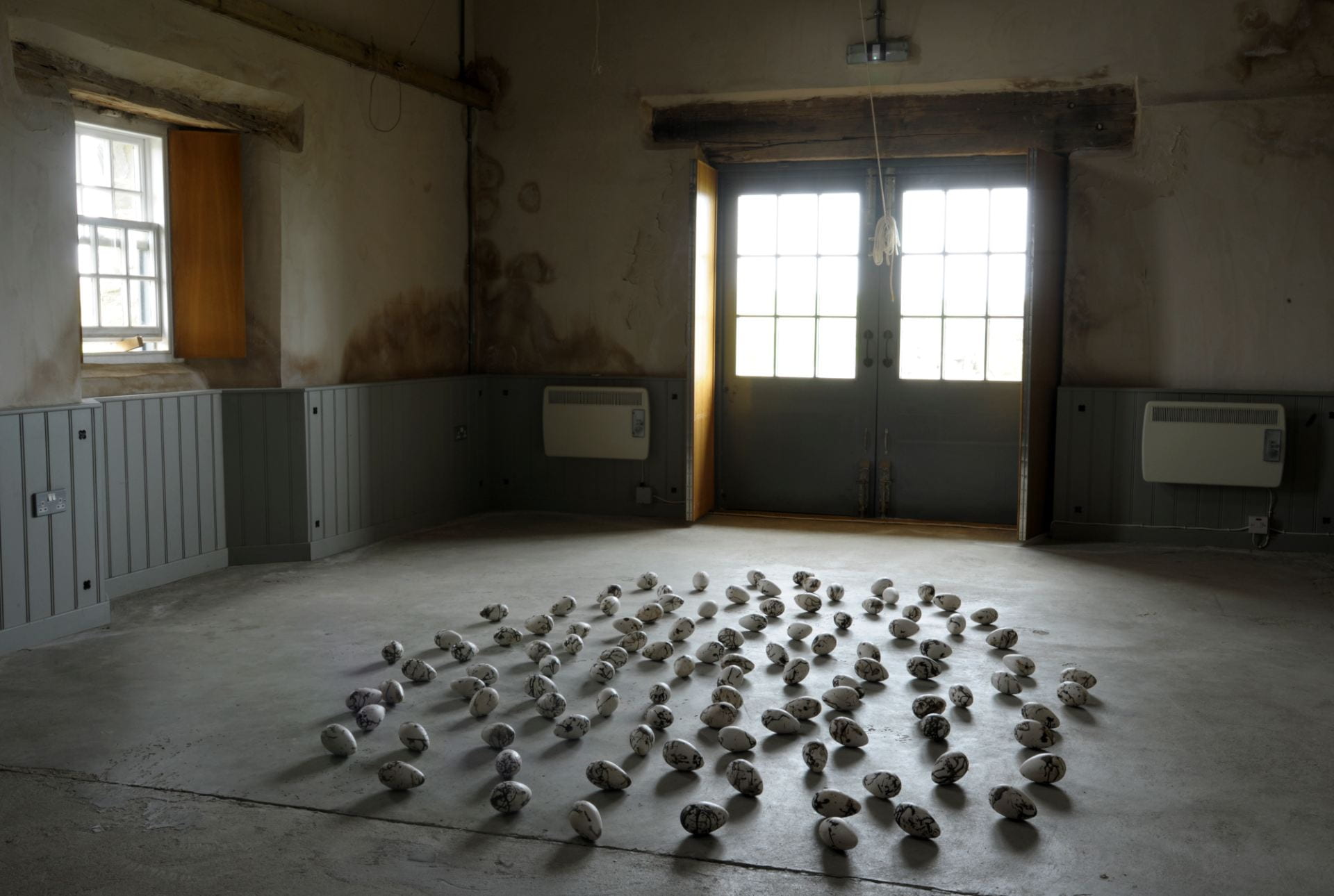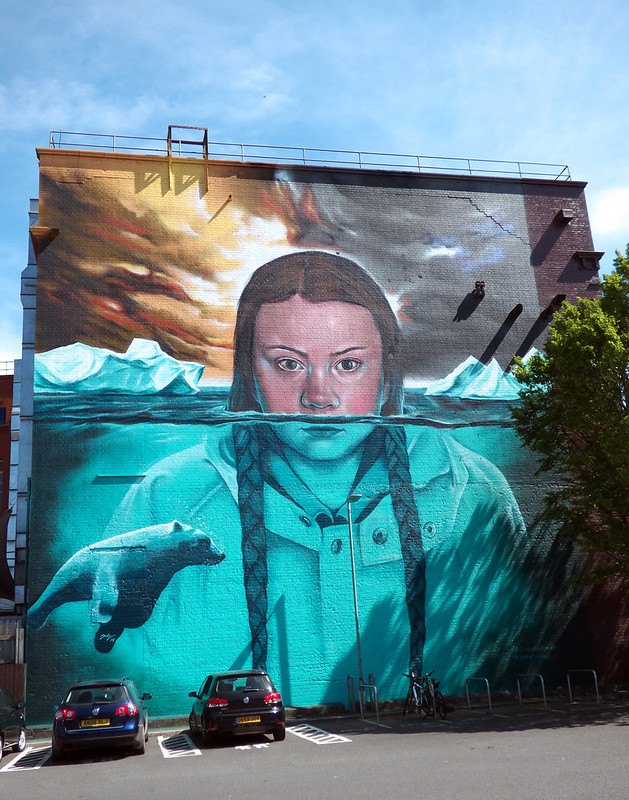by Sam Le Butt, PhD student in the Department of English
sam.lebutt@bristol.ac.uk

As a researcher in ecocriticism, I have sometimes felt out of place in the monolithic world of my ‘single honours’ English Literature PhD programme. My research looks at the role of monsters and monstrosity in contemporary environmental fiction, asking how and why authors use representations of monstrosity when talking about environmental pollution and toxicity. However, it can often provoke larger questions about the viability, or propriety, of literary study in service to something, those old disagreements about the ‘instrumentalisation’ of art. On the one hand, that literature and art more generally have the power (and therefore a certain duty?) to synthesise and emote an issue, giving it a tangible and relatable form that allows readers or viewers to feel empathy for others or sympathy for a cause. On the other hand, the idea that any didacticism robs a work of that ineffable artistry that moves us so, indeed qualifies something as art. Perhaps the very contemporary nature of my texts also occasionally provokes scepticism: these are texts that have yet to stand the tests of time, to prove their inventive potential within a culture (according to Derek Attridge’s qualification of literature). There are many fault lines of opinion to be navigated here, but these may be a few reasons why I have always felt more at home in the field of environmental humanities.
At Bristol, the Centre for Environmental Humanities has proved to be a vital research community for me during my PhD, because although our materials and lines of inquiry are vastly different, those working in the environmental humanities all agree on one thing: that our current moment is undergoing such vast and unprecedented environmental (read also social, political, and cultural) changes, that their intersections with the arts and humanities demands attention. Though I obviously work within the paradigms of literary criticism, my research on monstrosity in fiction is always prismed through an environmental lens: what makes the monster such a popular, effective, or seductive storyteller of environmental disturbance? What draws in so many writers to its narratorial and representative powers? In the monster’s concerns with the self and other, the body, and material being, how does it speak to key environmental concepts such as relationality, entanglement, and epistemological rupture?
It was questions such as these that I was given the opportunity to explore on my recent University of Stavanger Greenhouse Fellowship on environmental storytelling in November 2023. More specifically, I used the time to start my research on ‘monstrous mycelium’, hoping to unpack some of the fissures and continuities across the recent explosion of fungal representations in contemporary culture. Many with even a passing interest in that third strange taxonomical kingdom will be aware of the stunning visual representations in recent years, perhaps most notably HBO’s The Last of Us, but a quick Google search throws up endless blog posts and media articles about the recent trend of ‘mushroom horror’ and its historical forebears; lists of contemporary fiction that feature fungal representations in horrific or disturbing ways; and a growing number of academic book chapters and scholarly articles appearing on the subject. For me, fungi encapsulate that precise intersection between the ecological and the monstrous, as beings that are hard to categorise and contain, with unfamiliar ways of being and knowing, that can be interpreted both as a threat and a radical alternative to Anthropocentric subjectivity, control, and dominance. Beyond that, I was curious see if any of these contemporary fungal narratives were exploring themes of environmental damage or ecodegradation specifically, alongside the more familiar tale of psycho-corporeal invasion.
Several of the Greenhouse colleagues I met in Stavanger said it was a shame my visit hadn’t coincided with Norway’s mushroom picking season; there had been trips only a few weeks prior out to the forests and hilltops of the surrounding Jæren region (known in the tourist literature as the Edge of Norway). Instead, I would have to make do with the Fungi board game kept in the Greenhouse library, quipped Finn Arne Jørgensen, Professor of Environmental History at Stavanger and co-director of the Greenhouse centre with Professor Dolly Jørgensen, the brilliant environmental historian and extinction scholar. Both Dolly and Finn Arne were incredibly hospitable during my stay, and I did, in fact, get the opportunity to sample their vast board game collection, notably the fantastically complicated ecologically themed card game called Forest Shuffle, at which I was roundly beaten by everyone involved.
This is just one example of the warm and welcoming community I encountered in the Greenhouse. When I first arrived at the department (the environmental humanities department, a whole department), Dolly led me around and introduced me to the whole team, the professors and the well-paid post docs, the interns and the PhDs. When asked about my research here, my answer prompted further questions, but ones directed by understanding and familiarity with the topic: “Will you be incorporating much Anna Tsing into your talk?” “Have you read Gaia Giuliani’s Anthropocene monster book?” “If you’re thinking of Mexican Gothic, we have Rocio Gomez’s book on silver mining in Mexico in the Greenhouse library.” Even if their interest in monsters was minimal, there was an implicit understanding of why monstrosity might be important for ecocriticism and were keen to listen to my thoughts on the topic either way. This is not to suggest that good research comes from surrounding yourself with sympathetic listeners or affirming assumptions (although finding the evaluative and critical arguments to support these is also important), but more that to feel that you are in an environment of sympathetic support, that those around you might share an understanding of the broader implications of thinking through narratives and metaphors and what they may betray about how we relate to the world around us, is enormously stimulating. It’s the same feeling I get at the Bristol CEH, but with the added bonus of that community having a physical space in which to come together, share ideas, and pursue ongoing conversations.

The nucleus of that space is the small (but mighty!) library, which collects together an impressive number of resources the centre has built up over the past few years. Although I was familiar with lots of the books already, this was the result of painstaking bibliography-building over the past two years – and here they all were! In one place! More importantly, the library offers free coffee, providing essential caffeine and water-cooler vibes, at times a welcome reprieve from the solitude (but also, oh so peaceful and distraction-free environment) of my very own office – a considerable luxury for a PhD student. Having my own space to think and write meant I got more done in just under four weeks than I would in thrice the time at home, but the regular roster of events also gave me plenty of opportunities to get to know my colleagues: an online book talk every Monday, a research seminar on Wednesday afternoons, the ‘official’ department lunch every Thursday. There was also a loose arrangement that whoever was hungry at 12pm (rarely me, considering the three-course hotel breakfast I forced down each morning – who could resist such a resplendent feast, at no additional cost, in a country where a loaf of bread could set you back £3.50??) would find an assortment of other envirohums colleagues in the department canteen, happily munching their sandwiches.
All of this culminated in a real atmosphere of collegiality. This is no doubt down to the talents and dedication of Dolly and Finn Arne, who must spend hours tracking down authors for their book talks, hosting and recording them, organising research talks, fellowships, projects, syllabi; but it is also due to a sense of commitment in the wider team, to make time, to show up, to share progresses, opportunities, frustrations. The result is an ability to have ongoing dialogue about the broader concern that unites them all together: the mediations and conceptualisations of the environment – natural, built, societal, bodily – in the humanities. It allows for organic connections, mutual investment, and genuine intellectual and emotional connection. This is especially important for still-emerging disciplines, but it’s a feeling all academics know from conferences and symposia, where you can skip the explanations and get down to the nitty gritty of your research area. All in all, it gives you a much better sense of ‘what is known’ in the community, what questions are being asked, what conversations are being had.
This is not, for a moment, to suggest that my colleagues at Bristol – nor those at other British universities – are less dedicated. Far from it. However, I suspect it is a question of resources: fiscal, which inevitably correlates with temporal and emotional. I know the postgraduates are paid a much better wage – and this may certainly translate into higher event attendance. For what it has to work with, the Bristol CEH does very well, and it is keen to learn from more established communities like those in Stavanger. Last term, the CEH began offering a version of the Greenhouse Thursday Lunch – a Wednesday coffee social held in the arts complex staff common room, 11am-12pm, where colleagues can come together for a regular catch up, to try and strengthen that sense community that I – and certainly many other ‘strange fellows’ of the interdisciplinary type – have already benefitted from at the Bristol CEH. I would encourage those who have time to come along and help us build a strong communal atmosphere that will see the research centre continue to flourish.
When it came time to give my research talk on ‘Monstrous Mycelium’ at the end of the month, I was buoyed to be speaking to a crowd (I say crowd: we’re talking departmental research seminar, it was hardly Wembley) of friendly and familiar faces. Faces I’d eaten lunch with many times over the 28-day period. Faces who I’d join in drinking £10 pints with later that week, to celebrate what, I think, was a successful talk. New faces, including that of the renowned monster scholar Ingvil Hellstrand, who made the time to come and listen to my monstrous ramblings – what a humbling treat. For the talk itself, far from the extensive critique of a contemporary mycelial genre I’d pictured, I ended up doing a kind of open-ended comparison of mushroom imagery in Silvia Moreno Garcia’s Mexican Gothic and Anna Tsing’s ‘Testimony of a Spore’, asking how fungal characteristics are made to do different theoretical and affective work in each. Although I ended up probing Tsing’s, and other envirohums scholars’, valorisation of the fungus as a theoretical and sociopolitical tool for the ongoing deAnthropocentering project, I can certainly understand its allure. When environments of collaboration and spaces of ongoing networking are supported, stunning Greenhouses can grow.






